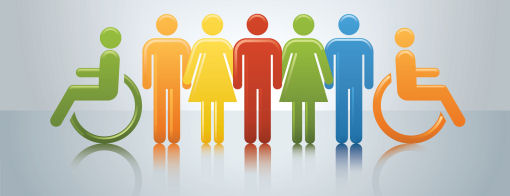2021-2023 update
Employment data for the latest available years is on the Employment Equalities Monitoring page
Equality Outcomes and Mainstreaming Report 2021-2025
- Equality Outcomes and Mainstreaming Report 2021-2025 (PDF 3024KB)
BSL Video Summary of Equality Report 2021-2025
Ensuring equality and protecting human rights and fairness is more important than ever.
The COVID 19 pandemic has brought into sharper focus pre-existing and persistent inequalities especially for younger people, Black minority ethnic people, severely disabled people, and women and those affected by poverty.
The challenges are significant but provide an opportunity to reflect on our priorities and how we move forward. We want to ‘build back better’ and tackling inequalities is central. We will address this in partnership with people, communities and organisations across West Dunbartonshire.
We will build on past work, and the energy and commitment demonstrated by the residents, employees and volunteers during the pandemic.
This report details progress made by West Dunbartonshire Council generally, our Education Services in particular, and the Licensing Board on mainstreaming equality and delivering the equality outcomes we committed to in 2017.
We map our priorities for the next four years through our renewed equality outcomes for 2021-2025. We know that the impacts of the pandemic are continuing to emerge and recognise the need to respond to circumstances using an equalities and human rights perspective help make the best decisions we can.
The report contains our Equal Pay Statement, and employment diversity information can be found on the Employment Equalities Monitoring page.
The Council is committed to fulfilling the three key elements of the general equality duty as defined in the Equality Act 2010:
- Eliminating discrimination, harassment and victimisation
- Advancing equality of opportunity between people who share a protected characteristic and those who do not
- Fostering good relations between people who share a protected characteristic and those who do not. This includes challenging prejudice and building understanding.
Protected characteristics:
- age
- disability
- gender reassignment,
- pregnancy and maternity
- race, this includes ethnicity, colour and national origin
- religion or belief
- sex
- sexual orientation
- marriage/civil partnership (for which only the first duty is applies)
Everyone has 'protected characteristics', but it is the treatment individuals and groups receive, the level of autonomy they have, and the positive or negative outcomes for them, that are its focus. Therefore the Council will:
- Remove or minimise disadvantages experienced by people due to their protected characteristics
- Meet the needs of people from protected groups where these are different from the needs of other people
- Encourage people with protected characteristics to participate in public life or in other activities where their participation is disproportionately low.
While it is a legal requirement, these steps contribute to fairer, more efficient and more effective services. Therefore the Council will:
- take effective action on equality
- make the right decisions, first time around
- develop better policies and practices, based on evidence
- be transparent, accessible and accountable
- deliver improved outcomes for all.

